Market Data

May 20, 2019
PPI Data: Steel Loses Ground vs. Aluminum, Plastic
Written by Peter Wright
The competitiveness of steel continues to lose ground against aluminum and plastic, according to the latest data from the Bureau of Labor Statistics. Cold rolled steel sheet has become less competitive against aluminum sheet in the last year and this has carried through to steel and aluminum cans. Steel tubular goods have lost ground to plastic pipe, but prefabricated steel buildings have gained slightly against wood.
This Producer Price Index (PPI) report is intended to provide subscribers with a view of the competitive position of sheet steel, aluminum, plastic and wood. This analysis includes some downstream products and a comparison of truck and rail transportation.
![]()
On Tuesday, the BLS released its series of PPIs for more than 10,000 goods and materials through April. For an explanation of this program see the end of this piece. The PPI data are helpful in monitoring price direction and, as far as we can tell from comparison with known transaction prices, these indexes are a reasonable representation of the real world, though there may be a lag between the BLS reports and spot prices for steel products. We have also concluded that the actual index values of the PPIs of different products cannot be compared with one another because they are developed by different committees within the BLS. We believe this data is useful in comparing the direction of prices in the short and medium term, but tell us nothing about the absolute value.
The headline summary from the BLS was as follows: “The Producer Price Index for final demand rose 0.2 percent in April, seasonally adjusted. Final demand prices advanced 0.6 percent in March and 0.1 percent in February. On an unadjusted basis, the final demand index increased 2.2 percent for the 12 months ended in April. Leading the April rise in the index for final demand, prices for final demand goods climbed 0.3 percent. The index for final demand services edged up 0.1 percent, and prices for final demand construction advanced 1.6 percent.”
Figure 1 shows the composite PPI of all commodities since January 2008. The index rose steadily for 2½ years through mid-2018 before declining in November and December 2018. The index rose in both March and April 2019. Overall, the composite was up by 2.9 percent in the 12 months of 2018 and up by 0.9 percent in April year-over-year.
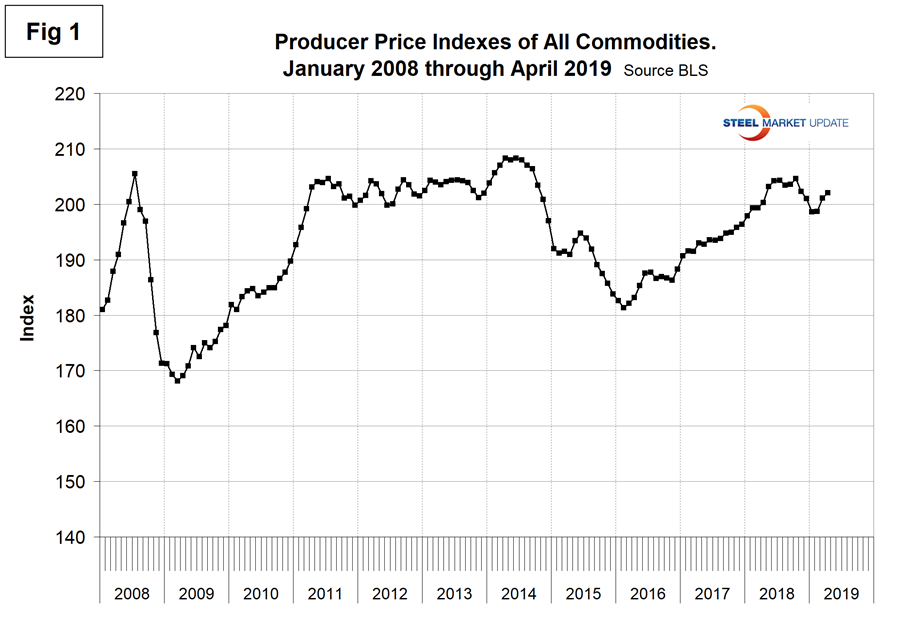
Table 1 is a summary of each segment that we examine on a year over one-, two- and three-year basis. The gain/loss pattern is shown by the color codes; we interpret rising prices as positive. We began this bimonthly analysis in January 2016 and the table has been predominantly green since February last year. The table includes direct comparisons where possible between steel and competing products, also some other plastic products for which there is no direct steel comparison, and a measure of price changes for transportation, warehousing and storage. Some specific comparisons of steel and steel products with their competition are as follows. Please note the Y axes are not to the same scale.
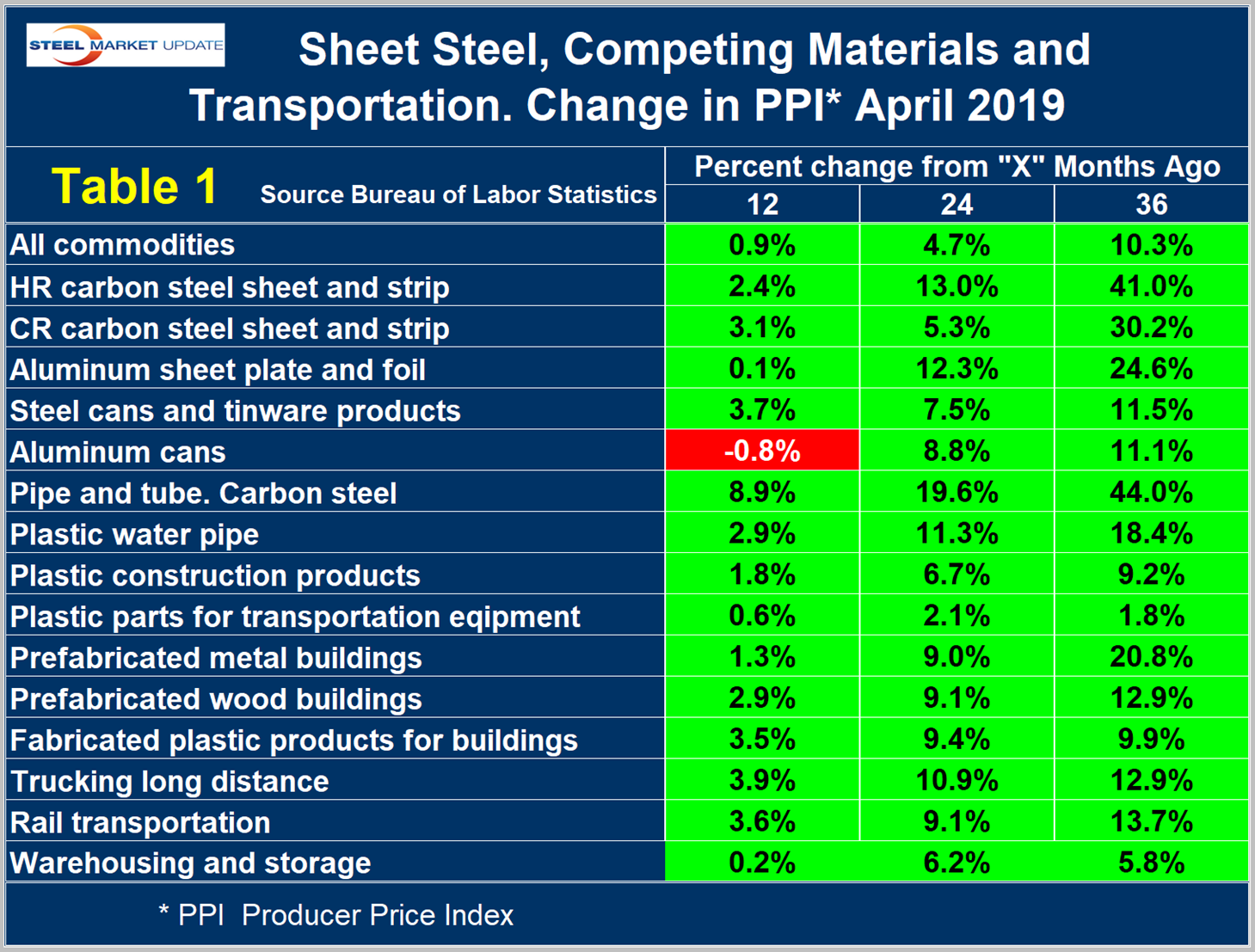
Figure 2 shows the year-over-year comparison of the price change of cold rolled steel sheet and flat rolled aluminum. The lines crossed in September last year and since then the competitiveness of steel has been losing ground to aluminum. In April 2019, the rate of change of the price indexes was 3.1 percent for steel and 0.1 percent for aluminum, both year over year.
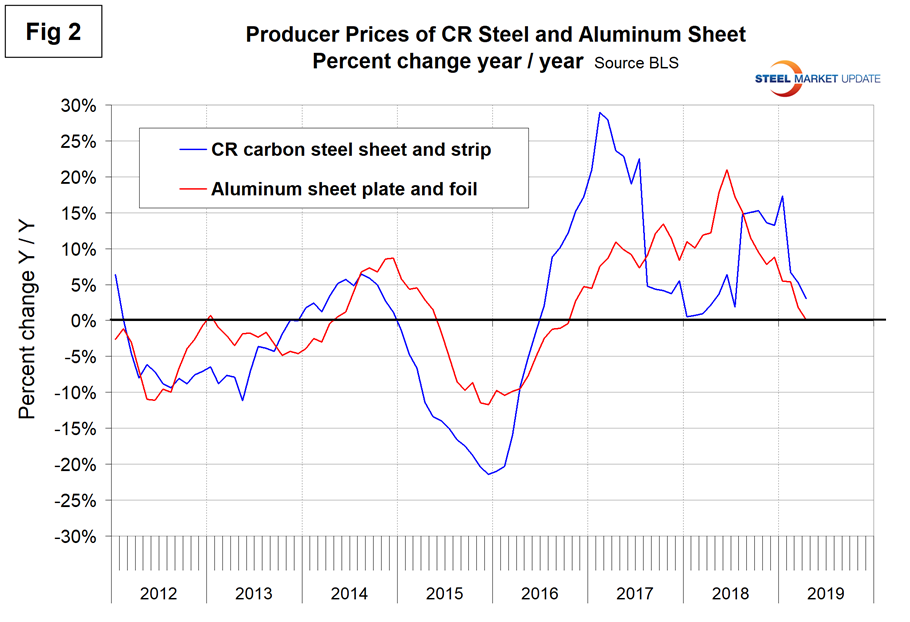
Figure 3 shows the same comparison for steel tinware products and aluminum cans. The competitiveness of their raw materials has carried through to the finished product.
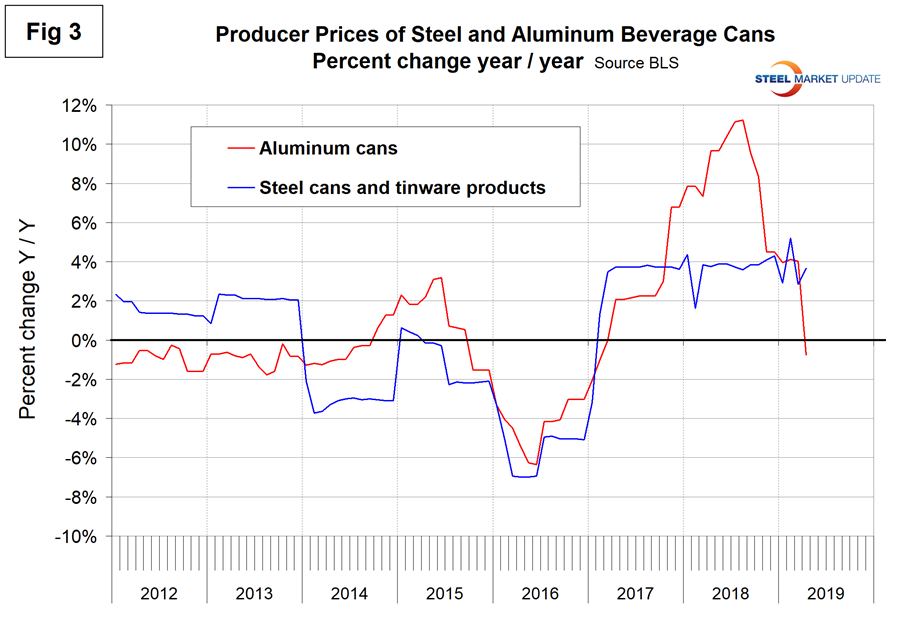
Figure 4 compares prefabricated metal with prefabricated wood buildings. The rate of increase of the price of steel buildings has become less than for wood for the first time since March last year.
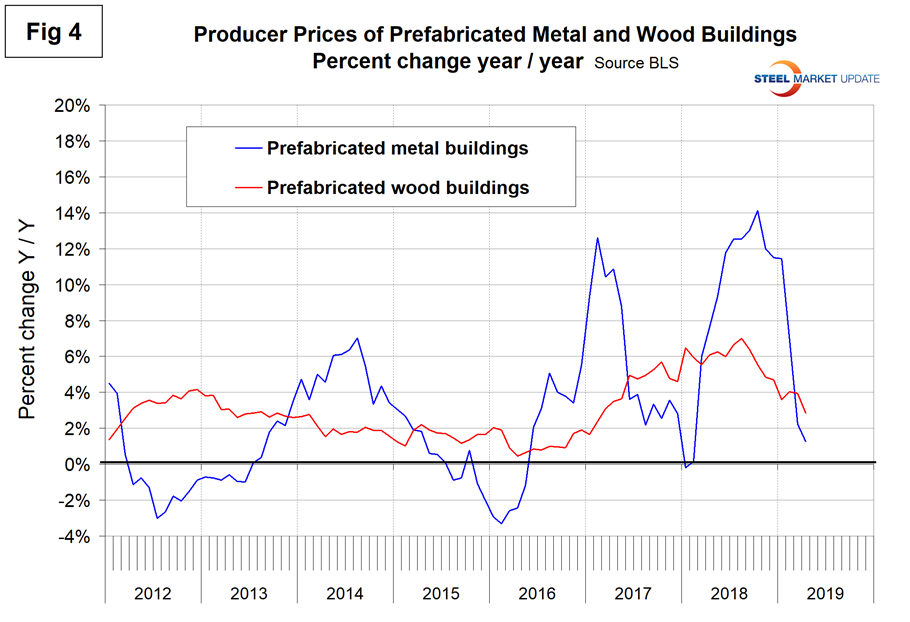
Figure 5 compares the price changes of steel and plastic pipe, which moved in opposite directions to the detriment of steel in 2018. The PPI of steel pipe had declined this year, but is still disadvantageous.

Figure 6 compares the changes in the price of truck and rail transportation. The escalation of trucking prices has exceeded those of rail almost every month since January 2015. Both have declined in the last six months and in April almost converged.
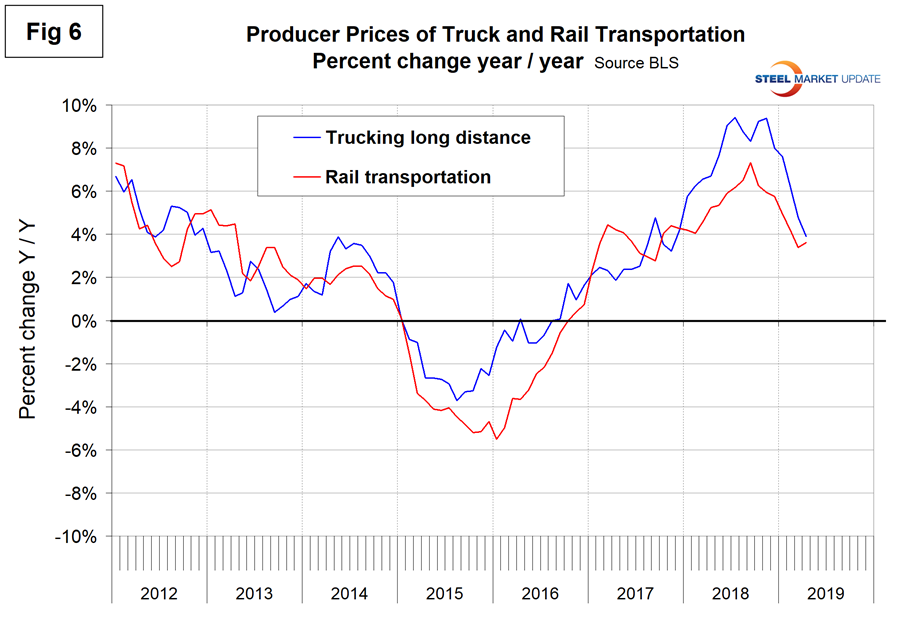
Figure 7 shows that the cost of warehousing and storage has declined steadily since April last year and became negative in March this year before returning to a slight price escalation in April.
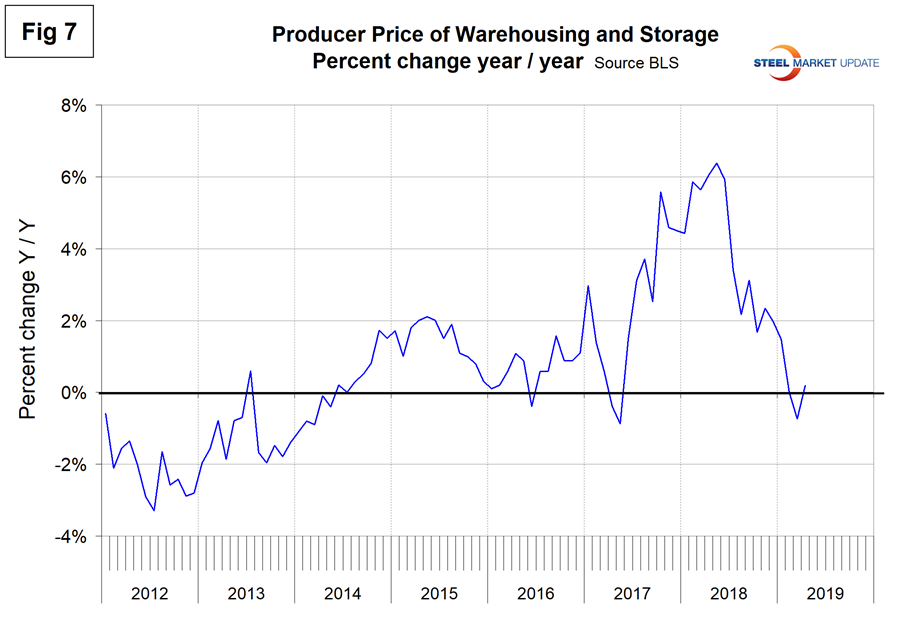
The official description of this program from the BLS reads as follows: “The Producer Price Index (PPI) is a family of indexes that measure the average change over time in the prices received by domestic producers of goods and services. PPIs measure price change from the perspective of the seller. This contrasts with other measures, such as the Consumer Price Index (CPI). CPIs measure price change from the purchaser’s perspective. Sellers’ and purchasers’ prices can differ due to government subsidies, sales and excise taxes, and distribution costs. More than 10,000 PPIs for individual products and groups of products are released each month. PPIs are available for the products of virtually every industry in the mining and manufacturing sectors of the U.S. economy. New PPIs are gradually being introduced for the products of industries in the construction, trade, finance, and services sectors of the economy. More than 100,000 price quotations per month are organized into three sets of PPIs: (1) Stage-of-processing indexes, (2) commodity indexes, and (3) indexes for the net output of industries and their products. The stage-of processing structure organizes products by class of buyer and degree of fabrication. The commodity structure organizes products by similarity of end use or material composition. The entire output of various industries is sampled to derive price indexes for the net output of industries and their products.







